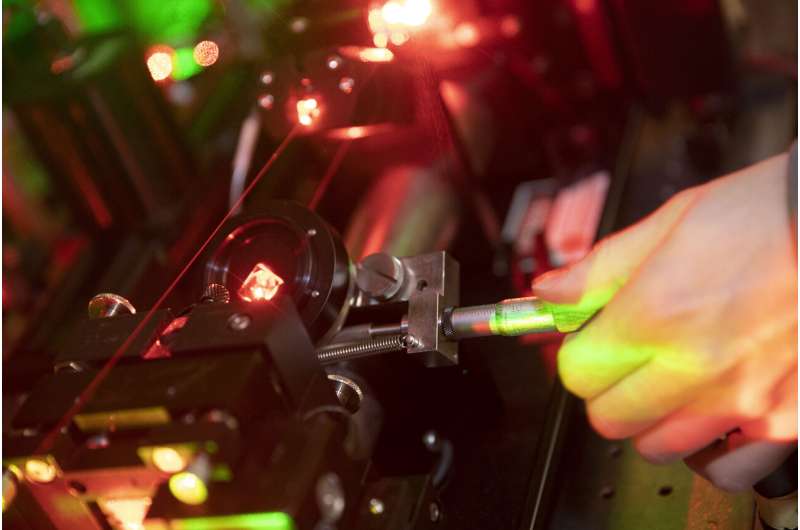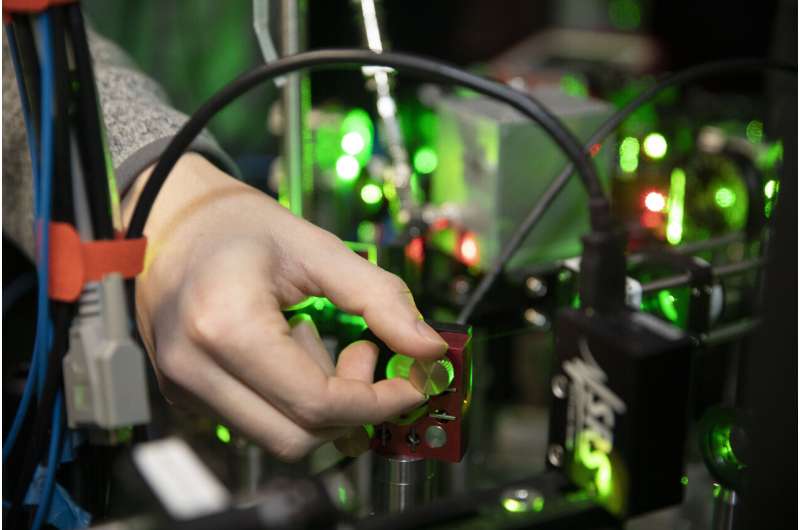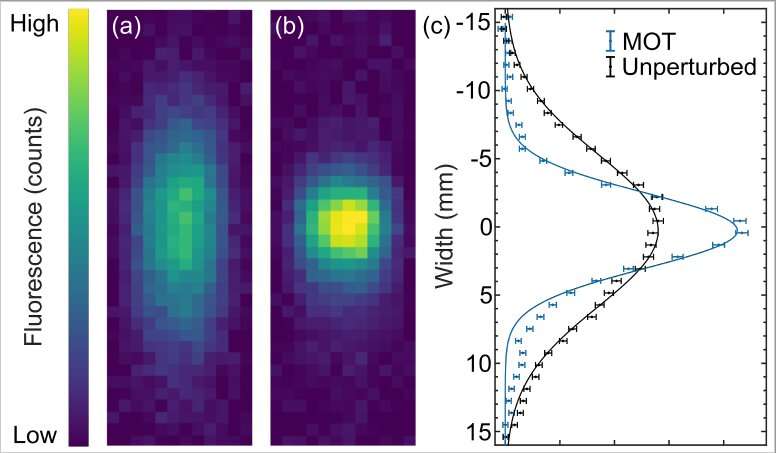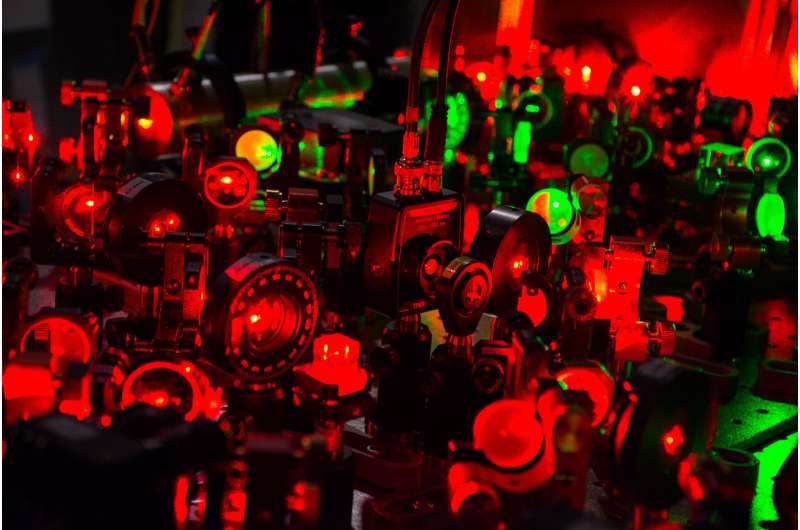April 21, 2020 feature
The realization of a 1-D magneto-optical trap of polyatomic molecules

Researchers at the Harvard-MIT Center for Ultracold Atoms have recently demonstrated a one-dimensional (1-D) magneto-optical trap (MOT) of polar free radical calcium monohydroxide (CaOH). This technique, outlined in a paper published in Physical Review Letters, was realized by cooling CaOH using radiative laser cooling techniques.
"Cold molecules are wonderfully complex systems that can be powerful measurement tools looking for new physics beyond the standard model or intricate building blocks to construct novel quantum systems and simulate their behavior," Louis Baum, one of the researchers who carried out the study, told Phys.org. "At low temperatures, we are able to fully manipulate even individual molecules, controlling how they interact with the environment and each other."
Inspired by the potential of cold molecules for unveiling new physical mechanisms, the researchers set out to investigate what happens when cooling techniques are applied to other compounds or chemical species. While there are several approaches for producing cold molecules, Baum and his colleagues used direct laser cooling, which has proved to be particularly effective over the past decade.
"As the ability to control diatomic molecules grew, we were curious to extend the same laser cooling techniques applied to simple molecules to larger, more chemically diverse species," Baum said. "Even moving from a diatomic molecule to a triatomic molecule, like CaOH, substantially increases the complexity of the system, but it also brings about new and interesting degrees of freedom. Our hope is to use these new degrees of freedom to conduct a number of exciting experiments."

In their recent experiments, the researchers were able to demonstrate a 1-D MOT by observing small changes in the width of a molecular beam, which corresponded to the transverse temperature of the molecules they used. A MOT essentially works by repeatedly scattering photons. Each of these scattered photons then delivers a small kick of momentum to molecules confined within the trap.
"With a careful combination of magnetic field and polarized laser light, we can control which molecules receive these kicks," Baum explained. "The system provides both cooling and trapping when we target the fastest molecules and molecules near the outside of the trap. However, in molecules, the same internal complexity that makes them interesting makes it difficult to scatter large numbers of photons."
Scattering a large number of photons through complex molecules has so far proved to be highly challenging. This is primarily because as molecules scatter a photon they can decay into an excited vibrational state, which is not addressed by the laser light. This may ultimately result in the molecules being lost inside a trap.
The 1-D MOT realized by Baum and his colleagues compensates for this undesirable effect. The researchers thus provide one of the first concrete examples of how molecules can be manipulated by scattering several hundred photons.

"Our work is not only a proof of the principle that previously developed techniques can be applied in polyatomic systems, but we also show that we have found a class of molecules where, despite their internal complexity, we can scatter more than 2,000 photons," Baum said. "Moreover, we know which vibrational states the molecules fall into, so we can recover them."
Just by using a few extra lasers, Baum and his colleagues anticipate that their method should enable the scattering of over 10,000 photons. This means that in future experiments their approach could also be potentially scaled up to cover all three dimensions.
About a decade ago, physicists considered the direct laser cooling of polyatomic molecules impracticable, if not entirely unfeasible. The recent study carried out by this team of researchers adds to the pool of evidence suggesting that cooling these complex molecules is in fact possible.
"We hope that our demonstration and the advances to come will provide a new experimental platform to explore the frontier of physics and quantum chemistry," Baum said. "Our immediate goal is to extend our result to a 3-D MOT of CaOH which will serve as that starting point for future experiments. One can imagine loading individual molecules in optical tweezers and building new platforms for quantum simulation or computation."

In their next studies, Baum and his colleagues would also like to investigate fundamental collisional processes, in other words, what happens on a quantum level when two molecules collide, which is still poorly understood. Collisional studies could ultimately pave the way for the development of evaporative cooling techniques, which may enable more extreme cooling and potentially the creation of a degenerate quantum gas of polyatomic molecules.
"We have also recently completed some work extending laser cooling to even larger species calcium monomethoxide (CaOCH3), which shows our techniques can be generalized to molecules with chemical or even biological relevance," Baum said.
More information: Louis Baum et al. 1D Magneto-Optical Trap of Polyatomic Molecules, Physical Review Letters (2020). DOI: 10.1103/PhysRevLett.124.133201
Journal information: Physical Review Letters
© 2020 Science X Network



















